Bitget: #4 mondial en volume de trading quotidien!
Part de marché du BTC59.17%
Frais de gaz ETH actuels: 0.1-1 gwei
Bitcoin Rainbow Chart: Accumulate
BTC/USDT$105739.01 (-0.36%)Indice Fear and Greed26(Peur)
Altcoin Season Index:0(Saison du Bitcoin)
Total des flux nets des ETF Spot Bitcoin +$1.2M (1j) ; -$1.4B (7j).Pack de bienvenue pour les nouveaux utilisateurs d'une valeur de 6200 USDT.Récupérer
Tradez à tout moment et en tout lieu grâce à l'application Bitget !Télécharger maintenant
Bitget: #4 mondial en volume de trading quotidien!
Part de marché du BTC59.17%
Frais de gaz ETH actuels: 0.1-1 gwei
Bitcoin Rainbow Chart: Accumulate
BTC/USDT$105739.01 (-0.36%)Indice Fear and Greed26(Peur)
Altcoin Season Index:0(Saison du Bitcoin)
Total des flux nets des ETF Spot Bitcoin +$1.2M (1j) ; -$1.4B (7j).Pack de bienvenue pour les nouveaux utilisateurs d'une valeur de 6200 USDT.Récupérer
Tradez à tout moment et en tout lieu grâce à l'application Bitget !Télécharger maintenant
Bitget: #4 mondial en volume de trading quotidien!
Part de marché du BTC59.17%
Frais de gaz ETH actuels: 0.1-1 gwei
Bitcoin Rainbow Chart: Accumulate
BTC/USDT$105739.01 (-0.36%)Indice Fear and Greed26(Peur)
Altcoin Season Index:0(Saison du Bitcoin)
Total des flux nets des ETF Spot Bitcoin +$1.2M (1j) ; -$1.4B (7j).Pack de bienvenue pour les nouveaux utilisateurs d'une valeur de 6200 USDT.Récupérer
Tradez à tout moment et en tout lieu grâce à l'application Bitget !Télécharger maintenant


Prévisions des prix de impactMarket (old) (PACT)
Combien pourrait valoir impactMarket (old) en 2025, 2026, 2030 et au-delà ? Quel est le prix prévu de impactMarket (old) pour demain, cette semaine ou ce mois-ci ? Et quel retour sur investissement pourriez-vous obtenir en détenant impactMarket (old) jusqu'en 2050 ?
Cette page met à votre disposition des outils de prédiction du prix de impactMarket (old) à court et à long terme, afin de vous aider à évaluer l'évolution future du prix de impactMarket (old). Vous pouvez également définir vos propres prédictions pour estimer la valeur future de impactMarket (old).
Il est important de noter que, compte tenu de la volatilité et de la complexité inhérentes au marché des cryptomonnaies, ces prédictions, tout en offrant un aperçu des fourchettes de prix et des scénarios potentiels, doivent être considérées avec prudence et scepticisme.
Cette page met à votre disposition des outils de prédiction du prix de impactMarket (old) à court et à long terme, afin de vous aider à évaluer l'évolution future du prix de impactMarket (old). Vous pouvez également définir vos propres prédictions pour estimer la valeur future de impactMarket (old).
Il est important de noter que, compte tenu de la volatilité et de la complexité inhérentes au marché des cryptomonnaies, ces prédictions, tout en offrant un aperçu des fourchettes de prix et des scénarios potentiels, doivent être considérées avec prudence et scepticisme.
Le prix de cette crypto n'a pas été mis à jour ou a cessé de l'être. Les informations sur cette page sont fournies à titre indicatif uniquement. Vous pouvez consulter les cryptos listées sur le marché Spot Bitget.
Tableau prévisionnel des prix de impactMarket (old) pour 2025 et au-delà
Prédiction du prix de impactMarket (old) dans les 10 prochains jours sur la base d'un taux de croissance quotidien prévu de +0,014%.
Prix aujourd'hui (Nov 11, 2025)
$0
Prix demain (Nov 12, 2025)
$0
Prix dans 5 jours (Nov 16, 2025)
$0
Prix ce mois-ci (Nov 2025)
$0
Prix le mois prochain (Dec 2025)
$0
Prix dans 5 mois (Apr 2026)
$0
Prix en 2025
$0
Prix en 2026
$0
Prix en 2030
$0
D'après les prévisions de prix quotidiennes à court terme de impactMarket (old), le prix de impactMarket (old) devrait être de $0 le Nov 11, 2025, de $0 le Nov 12, 2025, et de $0 le Nov 16, 2025. D'après les prédictions de prix mensuelles de impactMarket (old), le prix de impactMarket (old) devrait être de $0 en Nov 2025, de $0 en Dec 2025, et de $0 en Apr 2026. D'après les prédictions de prix annuelles à long terme de impactMarket (old), le prix de impactMarket (old) devrait être de $0 en 2025, de $0 en 2026, et de $0 en 2030.
Prédiction du prix de impactMarket (old) aujourd'hui
Le prix actuel de impactMarket (old) (PACT) est de $0, avec une variation de prix sur 24h de -4.87%. Le prix de impactMarket (old) (PACT) devrait atteindre $0 aujourd'hui. En savoir plus sur : Prix de impactMarket (old) aujourd'hui.
Prédiction du prix de impactMarket (old) en Nov 2025
Le prix de impactMarket (old) (PACT) devrait évoluer de --% en Nov 2025, et le prix de impactMarket (old) (PACT) devrait atteindre $0 d'ici fin Nov 2025.
Prédiction de prix de impactMarket (old) pour 2025
Le prix de impactMarket (old) (PACT) devrait évoluer de --% en 2025, et le prix de impactMarket (old) (PACT) devrait atteindre $0 d'ici la fin de l'année 2025.
Prédiction du prix de impactMarket (old) à long terme : 2026, 2030, 2035, 2040, 2050
Ce qui suit est un modèle de prédiction des prix de impactMarket (old) sur la base d'un taux de croissance fixe. Il ne tient pas compte des fluctuations du marché, des facteurs économiques extérieurs ou des situations exceptionnelles, et se concentre uniquement sur la tendance moyenne du prix de impactMarket (old). Il aide les investisseurs à analyser et à calculer rapidement le potentiel de profit d'un investissement en impactMarket (old).
Saisissez votre taux de croissance annuel prévu pour le prix de impactMarket (old), et voyez comment la valeur de impactMarket (old) évoluera à l'avenir.
Saisissez votre taux de croissance annuel prévu pour le prix de impactMarket (old), et voyez comment la valeur de impactMarket (old) évoluera à l'avenir.
Prédiction de prix annuelle de impactMarket (old) sur la base d'un taux de croissance annuel prévu de 5%.
%
Croissance annuelle prévue. Saisissez un pourcentage compris entre -100% et +1000%.
| Année | Prix prédit | ROI total |
|---|---|---|
2026 | $0 | +5.00% |
2027 | $0 | +10.25% |
2028 | $0 | +15.76% |
2029 | $0 | +21.55% |
2030 | $0 | +27.63% |
2035 | $0 | +62.89% |
2040 | $0 | +107.89% |
2050 | $0 | +238.64% |
Sur la base d'un taux de croissance annuel de 5%, le prix de impactMarket (old) (PACT) devrait atteindre $0 en 2026, $0 en 2030, $0 en 2040, et $0 en 2050.
Prédiction de prix de impactMarket (old) pour 2026
En 2026, sur la base d'un taux de croissance annuel prévu de 5%, le prix de impactMarket (old) (PACT) devrait atteindre $0. Sur la base de ces prédictions, le rendement cumulé de l'investissement issu de la détention de impactMarket (old) jusqu'à la fin de l'année 2026 serait de 5.00%.
Prédiction de prix de impactMarket (old) pour 2030
En 2030, sur la base d'un taux de croissance annuel prévu de 5%, le prix de impactMarket (old) (PACT) devrait atteindre $0. Sur la base de ces prédictions, le rendement cumulé de l'investissement issu de la détention de impactMarket (old) jusqu'à la fin de l'année 2030 serait de 27.63%.
Prédiction de prix de impactMarket (old) pour 2035
En 2035, sur la base d'un taux de croissance annuel prévu de 5%, le prix de impactMarket (old) (PACT) devrait atteindre $0. Sur la base de ces prédictions, le rendement cumulé de l'investissement issu de la détention de impactMarket (old) jusqu'à la fin de l'année 2035 serait de 62.89%.
Prédiction de prix de impactMarket (old) pour 2040
En 2040, sur la base d'un taux de croissance annuel prévu de 5%, le prix de impactMarket (old) (PACT) devrait atteindre $0. Sur la base de ces prédictions, le rendement cumulé de l'investissement issu de la détention de impactMarket (old) jusqu'à la fin de l'année 2040 serait de 107.89%.
Prédiction de prix de impactMarket (old) pour 2050
En 2050, sur la base d'un taux de croissance annuel prévu de 5%, le prix de impactMarket (old) (PACT) devrait atteindre $0. Sur la base de ces prédictions, le rendement cumulé de l'investissement issu de la détention de impactMarket (old) jusqu'à la fin de l'année 2050 serait de 238.64%.
Combien gagnerez-vous grâce à vos actifs impactMarket (old) ?
Si vous investissez $100 en impactMarket (old) cette année et conservez ce montant jusqu'en 2026, les prédictions de prix suggèrent un profit potentiel de $5, reflétant un ROI de 5.00%. (Les frais ne sont pas inclus dans cette estimation).
Avertissement : ceci n'est pas un conseil d'investissement. Les informations communiquées sont fournies à titre informatif uniquement. Aucune information, aucun contenu, service ou autre élément proposé sur cette page ne constitue une sollicitation, une recommandation, une approbation ou un conseil financier, en investissement ou autre, de quelque nature que ce soit. Demandez une consultation professionnelle indépendante sous forme de conseils juridiques, financiers et fiscaux avant de prendre toute décision d'investissement.
Tableau de prédiction du prix de impactMarket (old) à court terme
Prévision de prix quotidienne de impactMarket (old) sur la base d'un taux de croissance quotidien prévu de 0.014%
Quelles sont les prévisions de prix pour impactMarket (old) pour demain, dans 5 jours, 10 jours et au-delà ?%
Croissance quotidienne prévue. Saisissez un pourcentage compris entre -100% et +1000%.
| Date | Prix prédit | ROI total |
|---|---|---|
Nov 12, 2025 (Demain) | $0 | +0.01% |
Nov 13, 2025 | $0 | +0.03% |
Nov 14, 2025 | $0 | +0.04% |
Nov 15, 2025 | $0 | +0.06% |
Nov 16, 2025 (5 jours) | $0 | +0.07% |
Nov 17, 2025 | $0 | +0.08% |
Nov 18, 2025 | $0 | +0.10% |
Nov 19, 2025 | $0 | +0.11% |
Nov 20, 2025 | $0 | +0.13% |
Nov 21, 2025 (10 jours) | $0 | +0.14% |
Basé sur un taux de croissance quotidien de 0.014%, le prix de impactMarket (old) (PACT) devrait atteindre $0 le Nov 12, 2025, $0 dans Nov 16, 2025, et $0 dans Nov 21, 2025.
Prédiction de prix de impactMarket (old) pour Nov 12, 2025
Basé sur le taux de croissance quotidien de 0.014% pour la prévision de prix de impactMarket (old), la valeur estimée de 1 impactMarket (old) sera de $0 le Nov 12, 2025 (Demain). Le ROI attendu de l'investissement et de la détention de impactMarket (old) jusqu'à la fin du Nov 12, 2025 est de 0.01%.
Prédiction de prix de impactMarket (old) pour Nov 16, 2025
Basé sur le taux de croissance quotidien de 0.014% pour la prévision de prix de impactMarket (old), la valeur estimée de 1 impactMarket (old) sera de $0 le Nov 16, 2025 (5 jours). Le ROI attendu de l'investissement et de la détention de impactMarket (old) jusqu'à la fin du Nov 16, 2025 est de 0.07%.
Prédiction de prix de impactMarket (old) pour Nov 21, 2025
Basé sur le taux de croissance quotidien de 0.014% pour la prévision de prix de impactMarket (old), la valeur estimée de 1 impactMarket (old) sera de $0 le Nov 21, 2025 (10 jours). Le ROI attendu de l'investissement et de la détention de impactMarket (old) jusqu'à la fin du Nov 21, 2025 est de 0.14%.
Prévision de prix mensuelle de impactMarket (old) sur la base d'un taux de croissance mensuel prévu de 0.42%
Quelles sont les prévisions de prix pour impactMarket (old) pour le mois prochain, dans 5 mois, 10 mois et au-delà ?%
Croissance mensuelle prévue. Saisissez un pourcentage compris entre -100% et +1000%.
| Date | Prix prédit | ROI total |
|---|---|---|
Dec 2025 (Mois suivant) | $0 | +0.42% |
Jan 2026 | $0 | +0.84% |
Feb 2026 | $0 | +1.27% |
Mar 2026 | $0 | +1.69% |
Apr 2026 (5 mois plus tard) | $0 | +2.12% |
May 2026 | $0 | +2.55% |
Jun 2026 | $0 | +2.98% |
Jul 2026 | $0 | +3.41% |
Aug 2026 | $0 | +3.84% |
Sep 2026 (10 mois plus tard) | $0 | +4.28% |
Basé sur un taux de croissance mensuel de 0.42%, le prix de impactMarket (old) (PACT) devrait atteindre $0 en Dec 2025, $0 en Apr 2026, et $0 en Sep 2026.
Prédiction de prix de impactMarket (old) pour Dec 2025
Basé sur un taux de croissance mensuel de 0.42%, le prix prévu de impactMarket (old) (PACT) en Dec 2025 (Mois suivant) est de $0. Le ROI attendu de l'investissement et de la détention de impactMarket (old) jusque fin Dec 2025 est de 0.42%.
Prédiction de prix de impactMarket (old) pour Apr 2026
Basé sur un taux de croissance mensuel de 0.42%, le prix prévu de impactMarket (old) (PACT) en Apr 2026 (5 mois plus tard) est de $0. Le ROI attendu de l'investissement et de la détention de impactMarket (old) jusque fin Apr 2026 est de 2.12%.
Prédiction de prix de impactMarket (old) pour Sep 2026
Basé sur un taux de croissance mensuel de 0.42%, le prix prévu de impactMarket (old) (PACT) en Sep 2026 (10 mois plus tard) est de $0. Le ROI attendu de l'investissement et de la détention de impactMarket (old) jusque fin Sep 2026 est de 4.28%.
Articles sur les tendances de prédiction de prix des cryptomonnaies

Robinhood Shares Crash After Record Quarter — What’s Spooking Investors?
Robinhood Markets, Inc. (NASDAQ: HOOD) stunned Wall Street this week with a record-breaking quarter that saw its revenue double and profits soar. The retail trading platform posted its highest-ever earnings, buoyed by surging activity in equities, options, and crypto markets, alongside strong interest income. The company also set records in customer inflows and asset growth. But despite the blockbuster numbers, the market responded in an unexpected way: Robinhood shares plummeted nearly 8% following the earnings release.
The sharp decline caught investors off guard, particularly after such a bullish report. With the stock up over 250% year-to-date prior to the announcement, expectations were sky-high—and even a stellar quarter wasn’t enough to sustain the rally. The sell-off highlights a deeper unease among investors about Robinhood’s rising expenses, the impending departure of its longtime CFO, and whether the fintech firm can continue its rapid growth without stumbling. In this article, we unpack Robinhood’s latest results, examine the market reaction, and explore what could be next for the stock.
What Is Robinhood Markets, Inc. (HOOD)?
Robinhood Markets, Inc. is a U.S.-based financial technology company best known for pioneering commission-free stock and crypto trading. Founded in 2013 by Vladimir Tenev and Baiju Bhatt, Robinhood quickly rose to prominence by lowering barriers to entry in retail investing—enabling users to buy and sell stocks, ETFs, options, and cryptocurrencies directly from a mobile app. The company’s mission to “democratize finance for all” struck a chord with a younger, tech-savvy generation of investors, helping it grow into a dominant force in the fintech sector.
Headquartered in Menlo Park, California, Robinhood today serves over 27 million funded accounts and manages more than $300 billion in customer assets. In addition to trading services, the platform offers a suite of financial products including Robinhood Gold (a subscription for advanced tools), IRA accounts, cash sweep programs, and cryptocurrency wallets. The company is also expanding internationally and experimenting with new revenue streams such as prediction markets. Its meteoric rise and cultural relevance during the pandemic-era retail trading boom earned it a spot in the S&P 500 in 2024, further cementing its role as a major player in the U.S. financial landscape.
A Record-Breaking Quarter for Robinhood
Robinhood’s third-quarter results shattered expectations across nearly every key financial metric. The company reported revenue of $1.27 billion, a 100% year-over-year increase, driven by higher transaction-based revenue, rising interest income, and growing premium subscription uptake. Net income surged to $556 million, translating to earnings per share (EPS) of $0.61, well ahead of analyst estimates of $0.53. The results marked Robinhood’s most profitable quarter to date.
Growth was broad-based across product lines. Equities trading revenue climbed 132%, options revenue rose 51%, and crypto trading revenue soared by 300%, reflecting a strong resurgence in digital asset activity. The company also saw record net deposits of $20.4 billion, lifting total assets under custody to $333 billion—up 119% from a year ago. Robinhood’s average revenue per user (ARPU) jumped 82% to $191, and its premium service, Robinhood Gold, added over a million members year-over-year to reach 3.9 million subscribers. CEO Vlad Tenev highlighted the results as evidence of “relentless product velocity,” noting new features like retirement accounts, prediction markets, and enhanced international access played a key role in user engagement.
Why Did Robinhood’s Stock Crash on Great News?
Despite delivering a record quarter, Robinhood’s stock dropped sharply—falling nearly 8% in the immediate aftermath of its earnings report. The reaction highlights growing market anxiety over issues that extend beyond current performance. Several key concerns appear to be driving the sell-off:
1. Rising Operating Costs
Robinhood guided for full-year expenses to come in at the higher end of its previously stated range. Investors are interpreting this as a sign of mounting cost pressures, particularly as the company continues to invest heavily in product development, marketing, and geographic expansion. While elevated spending is not unusual during high-growth phases, it raises concerns about potential margin compression in future quarters.
2. CFO Exit Adds Uncertainty
The company also announced that CFO Jason Warnick will step down in early 2026, ending a seven-year tenure that spanned Robinhood’s meteoric rise and public listing. Though successor Shiv Verma has been named, transitions in financial leadership often introduce uncertainty—especially for a fast-growing company navigating high expectations and a complex regulatory environment.
3. Crypto Revenue Fell Short of Lofty Expectations
While crypto trading revenue surged ~300% year-over-year, it still fell short of some analysts’ bullish projections. Given how volatile and influential crypto markets are to Robinhood’s user base, any underperformance in this segment can weigh heavily on sentiment, even if growth remains strong in absolute terms.
4. Valuation Catch-Up and Profit Taking
After rallying more than 250% year-to-date, Robinhood’s stock was trading at elevated valuation multiples—around 60x forward earnings. For many investors, the earnings event became a trigger for profit taking. With the bar set so high, even minor blemishes—like a leadership change or guidance concerns—can spark sharp corrections, especially in high-beta growth stocks.
The market response suggests that investors are looking past the stellar numbers and focusing on the path forward—especially the company’s ability to sustain growth while managing expenses and maintaining strategic continuity.
Wall Street Isn’t Panicking — Yet
Despite the sharp sell-off, many Wall Street analysts remain optimistic about Robinhood’s long-term trajectory. While they acknowledge short-term headwinds—like rising costs and leadership changes—the prevailing sentiment is that the company’s growth fundamentals remain intact.
Mizuho Securities boosted its price target from $145 to $172, reaffirming a “Buy” rating. Analysts praised Robinhood’s performance across emerging verticals, including prediction markets and premium subscriptions, calling the Q3 results “a testament to product expansion and deeper user monetization.”
Compass Point also raised its target, to $161, noting strong user engagement and the platform’s ability to grow assets under custody at a rapid pace. The firm sees upside potential if Robinhood can balance innovation with operational discipline.
That said, not all analysts are bullish. Goldman Sachs maintained a “Neutral” rating, cautioning that the strong quarter was already priced in. They highlighted concerns about margin pressure and the uncertainty surrounding the CFO transition.
The average 12-month price target for HOOD currently sits in the $120–$130 range—right around its current trading level. For now, Wall Street appears to be giving Robinhood the benefit of the doubt, but sustained execution will be key to regaining upward momentum.
Robinhood Stock Price Prediction: Can the Rally Resume?
Robinhood Markets, Inc. (NASDAQ: HOOD) Price
Source: Yahoo Finance
With Robinhood shares now trading in the mid-$120s following a sharp post-earnings pullback, investors are debating whether this is a temporary dip or the start of a deeper correction. The stock had been one of 2025’s standout performers—up more than 250% year-to-date—making its valuation and future trajectory central to any price outlook.
In the short term (3–6 months), analysts and technical traders are watching key support and resistance levels. Technically, the stock is hovering near its 50-day moving average (~$129), a zone that has previously attracted buying interest. If that level holds, Robinhood could stabilize and attempt to retest its recent highs around $140–$145. A break below $129, however, could trigger a slide toward the $120 support area, where further consolidation may occur.
From a fundamentals standpoint, the bull case rests on continued momentum in revenue and user growth, especially in high-margin areas like Robinhood Gold, crypto trading, and international expansion. If management can keep costs in check and deliver a smooth CFO transition, many on Wall Street believe the stock could push higher—especially with price targets as high as $172.
However, given its elevated valuation, the margin for error remains thin. Execution missteps, softer-than-expected trading activity, or broader tech-sector volatility could weigh on shares. As a result, most forecasts point to modest upside potential over the next several months, with high volatility likely to persist. Investors may need to brace for more choppiness as the market digests both the company’s growth and its growing pains.
Conclusion
Robinhood’s third-quarter performance was, by most measures, exceptional. The company delivered record revenue, expanding profits, and surging user engagement—demonstrating that it remains a major force in retail trading and fintech innovation. Yet the stock’s swift decline in response to the earnings report serves as a reminder that markets don’t just reward past performance—they price in the future.
Investors appear to be recalibrating their expectations in light of rising expenses, leadership transitions, and the challenges of sustaining hypergrowth in a competitive and regulated environment. With the stock trading near historical highs and valuations stretched, even minor uncertainties are enough to rattle sentiment.
Still, Robinhood has a strong foundation: a growing customer base, expanding product ecosystem, and a demonstrated ability to innovate quickly. If the company can maintain its growth trajectory while improving cost discipline and ensuring leadership stability, the recent dip may prove to be a buying opportunity rather than a red flag. In the months ahead, the focus will shift from celebrating big numbers to watching how well Robinhood navigates the complexities of scale.
Disclaimer: The opinions expressed in this article are for informational purposes only. This article does not constitute an endorsement of any of the products and services discussed or investment, financial, or trading advice. Qualified professionals should be consulted prior to making financial decisions.
Bitget Academy2025-11-07 16:49
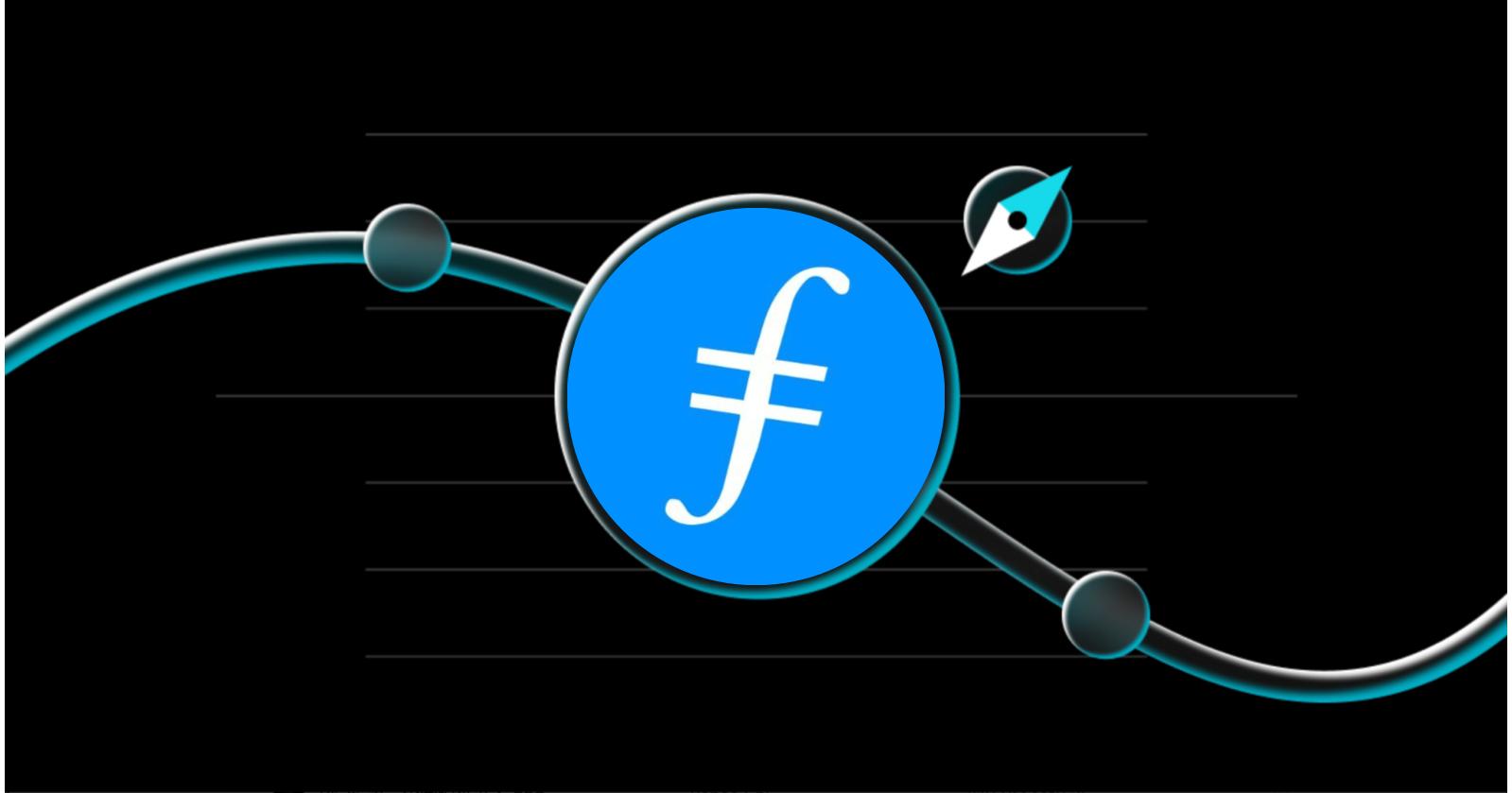
Filecoin (FIL) Soars Over 70% as DePIN Hype Builds — Will It Hit $3 Next?
Filecoin (FIL) has exploded back into the crypto spotlight after a dramatic price surge of over 70% in just 24 hours, jumping from around $1.33 to more than $2.25. This breakout not only caught many investors off guard but also propelled FIL above key technical resistance levels, igniting a wave of renewed interest across crypto markets. As one of the most significant movers this week, Filecoin’s rally signals a rising tide of confidence in decentralized infrastructure — particularly within the rapidly emerging DePIN (Decentralized Physical Infrastructure Networks) sector.
While the broader crypto market saw mixed performance, Filecoin led the pack as narratives around Web3 storage, decentralized AI infrastructure, and real-world blockchain utility gained momentum. With trading volumes surging and sentiment turning decisively bullish, FIL has recaptured attention from both short-term traders and long-term believers. The question now isn’t just why Filecoin is rallying — it’s whether this momentum can carry it toward the next major psychological milestone: $3.
What Is Filecoin (FIL)?
Filecoin is a decentralized storage network designed to transform how data is stored and distributed on the internet. Built on top of the InterPlanetary File System (IPFS), Filecoin allows users to rent out unused hard drive space in exchange for FIL tokens — its native cryptocurrency. This creates a permissionless, global marketplace for data storage where users pay miners to securely store and retrieve files. Unlike traditional cloud providers like Amazon Web Services or Google Cloud, Filecoin’s architecture is decentralized, meaning files are stored across many independent nodes rather than centralized data centers.
The network is powered by cryptographic proofs — miners must regularly prove they’re storing clients’ data to earn FIL rewards. Developed by Protocol Labs and launched in 2020, Filecoin aims to make storage more affordable, resilient, and censorship-resistant. Over the years, it has become a foundational player in Web3 infrastructure, supporting use cases ranging from NFT metadata and blockchain archives to scientific datasets and AI training corpuses. In essence, Filecoin doesn’t just store data — it decentralizes trust in how data is preserved and accessed.
The DePIN Effect: Why Filecoin Is Rallying Now
A major catalyst behind Filecoin’s explosive rally is growing investor enthusiasm for DePIN — Decentralized Physical Infrastructure Networks. DePIN refers to blockchain-based systems that coordinate real-world infrastructure, like storage, compute, and wireless connectivity, using token incentives. Filecoin fits this narrative perfectly, offering decentralized storage as a core component of Web3’s physical backbone. As the market searches for tangible utility beyond speculation, DePIN projects have stepped into the spotlight, and Filecoin has emerged as a sector leader.
Fueling the momentum is the upcoming “DePIN Day” on November 18, an event that’s drawing attention to projects in the category. Additionally, Filecoin recently announced an S3-compatible cloud storage integration with Akave Cloud, making it easier for enterprises to adopt decentralized storage solutions. These developments, combined with resurging demand for infrastructure tokens tied to AI and data workloads, have aligned to form a powerful narrative. As a result, traders have rotated heavily into FIL — and the price action reflects that enthusiasm.
Technical Analysis: Key Levels and Market Momentum
Filecoin (FIL) Price
Source: CoinMarketCap
Filecoin’s recent rally wasn’t just driven by narrative — the technical breakout was decisive. After consolidating in the $1.30–$1.60 range, FIL broke through a key resistance level at ~$1.93 with strong conviction. That move was backed by a surge in trading volume, with hourly volume spiking over 240% above its 24-hour average. Once FIL cleared the psychological barrier at $2.00, momentum traders jumped in, pushing the price as high as ~$2.27 before encountering minor resistance.
Currently, support is forming around the $2.10–$2.15 zone, while resistance sits near $2.30–$2.45 — close to the 200-day moving average, a key indicator many traders watch. The Relative Strength Index (RSI) shows that FIL may be short-term overbought, signaling a possible cool-off or consolidation before the next leg up. Still, the sustained volume and bullish structure suggest the trend remains intact, especially if FIL can hold above $2.00. A decisive breakout above $2.45 could open the path toward $3, making these technical levels crucial in the coming days.
Filecoin (FIL) Price Prediction: Will It Hit $3 Next?
With FIL gaining over 70% and reclaiming multi-month highs, the prospect of a push toward $3 is gaining traction. From a purely technical standpoint, if the current consolidation above $2.00 holds, bulls may target the next resistance around $2.45–$2.50, followed by a run toward the psychological $3 mark. A sustained move above the 200-day EMA, currently near $2.43, could trigger fresh momentum and validate a broader trend reversal.
Market sentiment is equally supportive. Analysts are highlighting Filecoin’s strengthening fundamentals — from enterprise-ready integrations like Akave Cloud’s S3-compatible solution to its central role in DePIN narratives. Short-term volatility is expected, especially after such a fast rise, but if the broader market remains steady and DePIN interest holds, a climb to $3 is within reach. In a bullish scenario, $3.50–$3.80 could even come into play, while a pullback might find support between $1.90 and $2.10.
Broader Implications: Filecoin’s Role in Web3 Infrastructure
Filecoin isn’t just a speculative asset — it plays a critical role in the infrastructure layer of Web3. As more applications demand decentralized, trustless data solutions — from blockchain gaming to decentralized AI models — storage becomes an essential building block. Filecoin addresses this need by offering scalable, verifiable storage that doesn’t rely on centralized cloud providers. Its integration with IPFS makes it especially attractive for hosting NFT metadata, dApp content, and long-term archives in a censorship-resistant way.
Beyond storage, Filecoin is helping to define what a decentralized internet looks like. Projects like Arweave and Storj share similar goals, but Filecoin stands out due to its network size, protocol maturity, and growing ecosystem. The recent surge in price reflects not just market hype, but a broader recognition that utility-focused protocols are key to blockchain’s future. As the DePIN movement evolves and institutional interest in Web3 infrastructure grows, Filecoin is increasingly viewed as one of the space’s most credible long-term bets.
Conclusion
Filecoin’s explosive 70% rally has reenergized interest in decentralized infrastructure and positioned FIL as a top-performing asset in the current crypto cycle. Backed by strong narratives like DePIN and real utility in Web3 storage, the move above $2 has shifted both technical momentum and investor sentiment. While short-term volatility remains a factor, the alignment of bullish chart signals, ecosystem developments, and rising demand for decentralized services makes a case for further upside.
Whether FIL can break through $3 in the near term will depend on sustained market interest and its ability to hold key support levels. But one thing is clear: Filecoin is no longer flying under the radar. Its role in powering decentralized data solutions puts it at the center of the Web3 infrastructure movement — and that could give it staying power well beyond this rally.
Bitget Academy2025-11-07 11:38
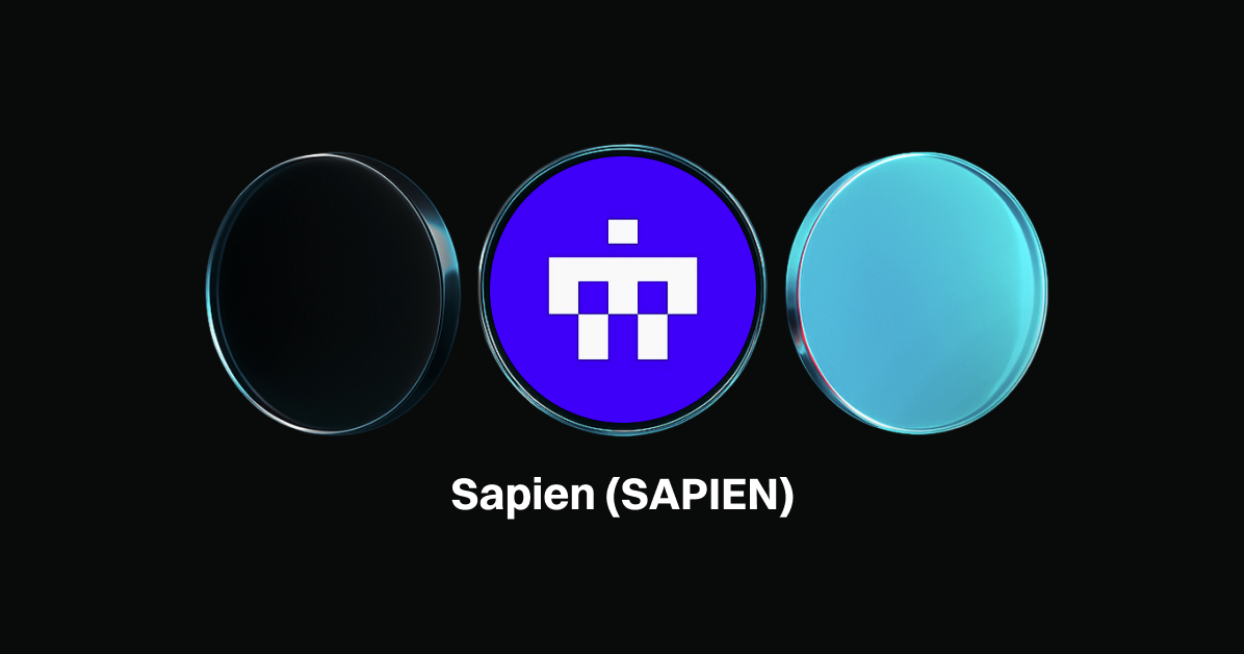
Sapien (SPN) Price Prediction 2025-2030: Why This Base AI Crypto Is Surging
Sapien made headlines after its token spiked over 120% in a single day—propelled by a major Binance airdrop campaign and speculation about a potential spot listing. Trading volumes soared, conversations erupted across social media, and big-name enterprises like Alibaba and Midjourney were confirmed among Sapien’s clients, cementing its reputation as a credible force in the decentralized AI data space.
But with this much excitement comes new questions: Is Sapien’s surge the beginning of something bigger, or just another flash in the pan? What’s driving the project’s momentum, and can it maintain this pace in a market that’s often unforgiving? In this guide, we’ll break down the recent rally, highlight the core technology and team behind Sapien, and offer a balanced, up-to-date outlook on where SPN could be headed next in the evolving world of AI-powered crypto.
Source: CoinMarketCap
Recent Price Surge
In late August, Sapien’s visibility soared as it made its debut via Binance’s Alpha listing. The token initially experienced a sharp decline, a common fate for new listings in a bearish crypto market. However, from September 1st, Sapien began a dramatic uptrend. The price more than doubled within days, and 24-hour trading volume surged fourfold from approximately $5 million to $20 million.
A particularly notable price spike arrived in early November, when Sapien (SPN) jumped 127% within a single day—surging past $0.35—on the back of Binance’s “HODLer Airdrop on Sapien.” This airdrop, which distributed 15 million SPN to BNB holders and allocated another 20 million SPN for marketing, energized the market and set off a major wave of trading. Speculation about a Binance spot listing further fueled rapid price movement; Sapien briefly shot above $0.32 in under an hour before heavy liquidation pressure set in.
The technicals confirmed the breakout: Sapien crossed a long-term descending resistance line, trading volume spiked, MACD went bullish, and RSI hovered at a strong (but not overbought) level. This rapid influx of new capital and sentiment shift signaled that Sapien had decisively exited a prolonged downtrend, with bullish traders eyeing next resistance in the $0.90–$1.00 range. Still, after such parabolic gains, some analysts caution a retracement or consolidation before the next move.
Drivers Behind the Surge
1. Major Exchange Activity & AirdropsThe Binance HODLer airdrop was a central catalyst, both by rewarding engagement and attracting fresh capital. Listings and airdrops, as demonstrated, inject volatility and draw speculative trading—even in an overall bearish market.
2. Fundamental AI DemandDespite the broader crypto market’s retreat from the “AI narrative,” enterprise demand for training high-quality AI models remains robust. Sapien’s value proposition—incentivized, verified, high-quality data for AI—positions it as a rare utility project in a field often dominated by meme tokens.
3. High-Profile Enterprise ClientsSapien’s client roster includes notable names such as Alibaba, Baidu, Toyota, Lenovo, and AI image creation leader Midjourney, as well as organizations like the United Nations. This lineup validates Sapien’s business model and enhances its reputation compared to many “AI” crypto tokens lacking real-world integration.
4. Ecosystem and FundingSapien’s ability to quickly raise capital—with $5M and $10.5M seed rounds in 2024, backed by major investors like Primitive Ventures and Animoca Brands—underscores VC belief in decentralized AI data infrastructure. Sapien’s debut via Binance Alpha both amplified its initial exposure and footed its credentials in the AI/data infrastructure race on Base.
Market Volatility: Sapien vs. Giggle Under Bearish Conditions
Sapien’s meteoric rise is notable because it occurred while the overall crypto market and most AI tokens saw lackluster activity or meme-driven surges. A comparable case is Giggle (GIGGLE), a meme token loosely linked to CZ and Giggle Academy. Giggle shot up 200% post-Binance debut before suffering wild swings and heavy liquidations—a volatility pattern similar to Sapien’s, albeit with far less fundamental support.
Giggle lives primarily off meme speculation, fleeting charity hype, and narrative adjacency (its “CZ-linked” association is more marketing than substance). In contrast, Sapien’s surge is underpinned by real-world use cases, business partnerships, and sustained user growth.
What is Sapien?
Sapien is a decentralized platform dedicated to sourcing, verifying, and selling high-quality data for AI model training. It addresses common pitfalls in the AI data market: lack of transparency, inconsistent quality, and weak incentives for contributors.
The core technical innovation is Sapien’s PoQ (“Proof of Quality”) mechanism. Contributors must stake SPN tokens when submitting datasets. Peers and automated systems verify data accuracy; if submissions pass, contributors receive rewards in stablecoins and additional SPN. Poor-quality data, however, can result in loss of 25%–100% of staked tokens, actively discouraging spam and low-effort contributions.
Sapien is already in production in high-stakes sectors like autonomous driving and medical imaging. For example, a reported Sapien case study highlighted a tumor specialist earning hundreds of dollars per hour marking cancer datasets—demonstrating both the value of high-quality data and the effectiveness of PoQ at attracting expert annotators.
User and contributor growth has averaged 50% monthly in 2024, with over 29 enterprise clients now onboarded. The case of Midjourney—relying on Sapien for image training data—shows how critical high-quality, human-annotated data is for next-generation AI models.
The Team Behind Sapien
Sapien’s founding group is its key strength.
CEO Rowan Stone was a co-founder of Base (Coinbase’s L2), providing unique insight and influence within the Base and broader Ethereum scaling ecosystem.
Chief Strategy Officer Trevor Koverko has deep roots in security tokenization (Polymath founder, architect of ERC-1400 for RWAs), bringing vital expertise in asset standards and decentralized incentivization.
This team’s experience, intricate ties with leading Web3 and AI ecosystems, and repeated success in startup funding rounds put Sapien in a strong position for both enterprise and DeFi expansion.
Why Sapien Leads the AI Sector on Base
Sapien’s prominence in the Base ecosystem is no accident:
BaseTVL has climbed past $6.8 billion, making it the #5 DeFi network globally. AI-focused protocols alone account for $2B+ TVL, reflecting the chain’s emphasis on future-proof infrastructure.
Sapien enjoys first-mover privileges in decentralized AI data—no small feat when most other “AI” tokens on Base are thinly veiled memes.
Integration with complementary Base projects is imminent. For example, Venice’s DIEM works on tokenizing AI compute, while Sapien covers the data side, together potentially forming a full-stack AI solution native to Base.
Meanwhile, Coinbase’s own strategic direction further validates Sapien’s market. CEO Brian Armstrong has noted that 40% of Coinbase’s own codebase is already AI-generated, targeting over 50% by late 2025.
Sapien Price Prediction: 2025 and 2026–2030
2025 Forecast
Analysts expect Sapien to sustain its post-breakout momentum, potentially reclaiming and exceeding its all-time high of ~$0.35. If enterprise adoption, TVL growth on Base, and AI sector tailwinds continue, $0.40–$0.50 is plausible (barring extreme macro/crypto shocks or regulatory events). This would entail market cap stability and renewed volume inflows, especially if further Binance integrations or a Direct Spot Listing occur.
2026–2030 Outlook
Longer-term predictions trend more cautiously, given the uncertainties in AI/crypto regulation and the natural saturation of AI data demand once foundational models are widely trained. Price targets for 2030 gravitate towards $0.25–$0.30, reflecting lower (but steadier) growth as Sapien matures from rapid expansion to “infrastructure utility” phase. However, the emergence of fresh enterprise use-cases or significant L2 ecosystem expansion could revise these upward.
Conclusion
Sapien stands out as a leading AI project on Base thanks to its strong team, real enterprise adoption, and innovative approach to high-quality data sourcing. Its rapid growth and recent price surge reflect solid fundamentals and rising market interest.
However, potential investors and users should also consider the challenges facing Sapien’s roadmap. The sustainability of the PoQ mechanism is not guaranteed—once major AI models reach maturity, the explosive demand for new training data may taper off, possibly reducing the platform’s core utility and growth. Managing quality and incentives across a rapidly expanding contributor base could exponentially increase operational complexity and costs. Finally, like all projects in the sector, Sapien is subject to regulatory risks, especially surrounding data privacy, cross-border flows, and compliance—issues that could severely impact growth if not navigated carefully.
Disclaimer: The opinions expressed in this article are for informational purposes only. This article does not constitute an endorsement of any of the products and services discussed or investment, financial, or trading advice. Qualified professionals should be consulted prior to making financial decisions.
Bitget Academy2025-11-07 10:21
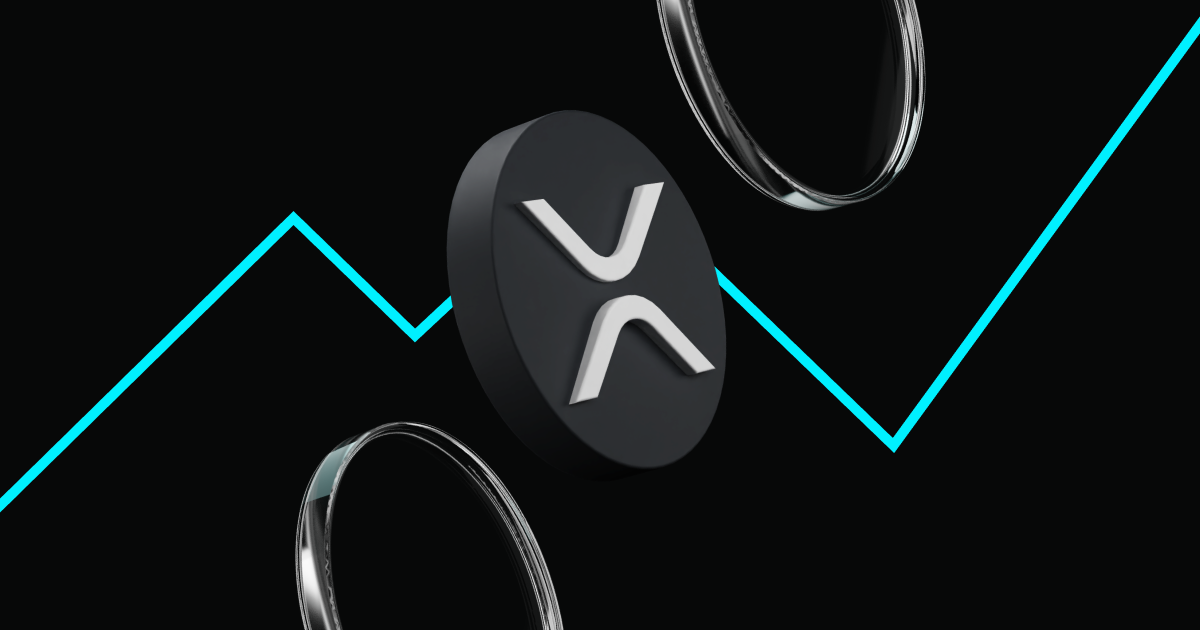
Ripple’s $500 Million Fund & IPO Update: What's Next for XRP Price
The past few months have been busy for Ripple. The company just closed a major $500 million funding round, brought new heavyweight investors on board, and made it clear it’s in no rush to pursue a Ripple IPO. These decisions have sparked plenty of conversation—especially among those watching XRP price trends and Ripple’s ongoing evolution in the digital payments space.
In this article, we’ll cut through the headlines to explain what Ripple’s latest moves could mean for investors, how XRP is performing now, and what might be in store for both Ripple and the wider crypto markets. Whether you’re actively trading XRP or just keeping an eye on big players in crypto, here are the updates that matter most right now.
Source: CoinMarketCap
Ripple Secures $500 Million in New Funding—No Ripple IPO Plans
In November 2025, Ripple announced it had raised $500 million in a new financing round—its first major fundraising in six years—catapulting its valuation to $40 billion. This investment was led by Wall Street heavyweights Fortress Investment Group and Citadel Securities, with participation from big names including Pantera Capital and Galaxy Digital.
At the Ripple Swell conference in New York, Ripple President Monica Long definitively addressed growing curiosity about a potential Ripple IPO. “No plan, no IPO timeline,” she told Bloomberg, emphasizing that Ripple’s robust balance sheet provides enough liquidity for organic growth, major M&A moves, and strategic partnerships, all without resorting to the public markets. Recent high-profile acquisitions, such as the $1.25 billion purchase of Hidden Road (now Ripple Prime) and the $200 million buyout of Rail, illustrate Ripple’s preference for private, strategic expansion.
Ripple’s decision to remain private, especially after surviving major U.S. SEC litigation, is shaping the future narrative around the keyword “ripple IPO,” with many investors prioritizing actual performance and ecosystem value over short-term market hype.
Institutional Funding Focused on XRP Token Reserves
The primary motivation behind the latest $500 million investment isn’t just Ripple’s fintech innovations, but the company’s unique position as the steward of one of the world’s largest digital asset treasuries—its massive reserve of XRP tokens. Ripple still holds over 34 billion XRP, with a notional market value exceeding $23 billion. Industry insights suggest institutional investors negotiated exposure to these XRP holdings, often at significant discounts to market value.
This focus on deep XRP reserves not only strengthens Ripple’s $40 billion valuation but also signifies Wall Street’s strategic bet on the token’s future role in global digital payments.
The Rise of PayFi and Ripple’s Strategic Timing
Ripple’s funding comes as “PayFi” or blockchain-based financial payment solutions reach new heights. Recent data shows XRP is capturing 8% of the crypto payment gateway market, behind only Bitcoin, Ethereum, and Litecoin. This demonstrates XRP’s established reputation in fast, low-cost cross-border settlements—now a pivotal driver of institutional and enterprise blockchain adoption.
Notably, 43% of e-commerce platforms now accept crypto payments, and 68% of top providers issue crypto credit cards. As XRP price and usage metrics improve, Ripple’s infrastructure and payment gateway investments are expected to lend new momentum to XRP as a settlement token for global finance.
Ripple’s Transformation Following the SEC Lawsuit
Ripple’s journey through regulatory adversity is well-documented. The aftermath of the SEC’s lawsuit in 2020 saw the delisting of XRP across key exchanges and a dramatic drop in XRP price. However, Ripple’s $200 million in legal expenditures and partial court victories paved the way for a radical business pivot.
In 2024, Ripple launched RLUSD, a fully compliant, enterprise-grade dollar stablecoin designed for real payment flows rather than speculative trading, drawing a clear line from previous stablecoin projects like USDT and USDC. Major partnerships with Mastercard and Gemini, alongside key acquisitions of Metaco (for digital asset custody), Rail, and Hidden Road, have further expanded Ripple’s reach. Today, Ripple offers a "full stack" suite of payments, stablecoin, and institutional custody solutions—demonstrating a significant transformation since the SEC ordeal.
XRP Price Prediction: 2025 & 2026 Outlook
With Ripple consolidating its market position, analysts expect continued momentum for the XRP price:
2025 End: XRP price could test resistance around $2.80 as institutional usage grows.
2026 Projection: In a bullish scenario—if PayFi expansion and partnerships continue—XRP price could reach $3.50 or more, potentially aiming for a new all-time high.
Determinants include further regulatory clarity, broadened payment use cases, and any future updates regarding the ripple IPO.
Conclusion
Ripple’s new $500 million fund, its purposeful avoidance of a ripple IPO, and the strong performance of the XRP price all reinforce Ripple’s leadership in crypto payments. With the current XRP price at $2.33 and market momentum building, Ripple remains a company to watch for anyone interested in the intersection of blockchain and global finance.
Disclaimer: The opinions expressed in this article are for informational purposes only. This article does not constitute an endorsement of any of the products and services discussed or investment, financial, or trading advice. Qualified professionals should be consulted prior to making financial decisions.
Bitget Academy2025-11-07 07:46
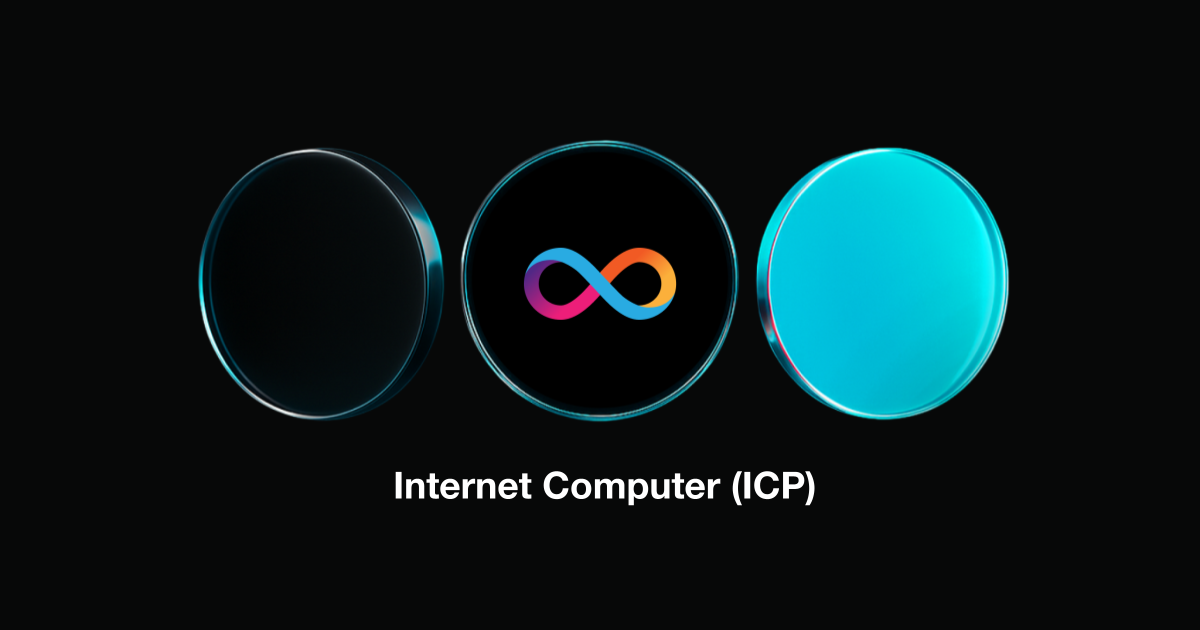
What is Internet Computer (ICP) Crypto? Why it Defies the Market Downturn?
Despite a significant decline in the overall cryptocurrency market, ICP crypto has distinguished itself with notable gains. Over the past 24 hours, ICP crypto increased by 13.1%, and over the past week, almost doubled in value with a 93.13% rally. As a result, the market capitalization of ICP crypto has reached $3.12 billion, accompanied by a sharp rise in daily trading volume to $678.4 million.
This divergence from broader market trends has led to heightened interest in ICP crypto. Its recent move above key technical resistance levels, alongside developments within the ecosystem—such as the growth of Caffeine AI and increased activity in leveraged futures trading—are noteworthy factors behind the current performance. Observers are now watching ICP crypto closely to assess the sustainability of this recent upward trend amid challenging market conditions.
Source: CoinMarketCap
What is ICP Crypto?
ICP crypto is the native token of the Internet Computer, a blockchain platform developed by the DFINITY Foundation. The project seeks to transform the development and deployment of applications, platforms, and services by hosting them directly on decentralized, blockchain-based infrastructure. This approach aims to reduce reliance on traditional IT infrastructure and centralized cloud providers, offering an alternative model for web-based applications.
Decentralized Computing Power: ICP crypto enables the operation of smart contracts, known as canisters, which support scalable and autonomous applications.
Full-Stack Hosting: Developers can use the Internet Computer to build and host a wide range of applications and services entirely on-chain.
Reverse-Gas Model: In this framework, developers pre-pay for resources using “cycles,” with ICP crypto facilitating a more predictable cost structure for decentralized apps.
ICP crypto, as a utility token, plays an essential role in powering both technical functions and community-driven governance within the Internet Computer ecosystem.
How Does ICP Crypto Work?
The Internet Computer introduces distinctive features that help define ICP crypto within the blockchain sector.
Advanced Canisters: ICP crypto utilizes canisters—smart contracts that store both software code and data. This allows the Internet Computer to support comprehensive, end-to-end decentralized applications.
Interoperability: Canisters can interact with other blockchains, such as Bitcoin and Ethereum, through threshold cryptography, offering additional integration options for decentralized finance (DeFi) and cross-chain solutions.
HTTPS Outcalls: Smart contracts on ICP crypto are able to make secure HTTP requests to external web services, facilitating real-world data access and broader application capabilities.
Additional characteristics of ICP crypto include:
Decentralization: Applications built on the Internet Computer do not rely on centralized hosting services, aiming to enhance resistance to censorship and tampering.
User Interface Hosting: The platform supports serving web front-ends directly from the blockchain, enabling a fully decentralized user experience.
ICP Crypto Tokenomics and Governance
ICP crypto serves several core functions within the Internet Computer ecosystem.
Resource Management: Developers convert ICP crypto into “cycles” to pay for computational resources, data storage, and bandwidth. This model aims to provide cost predictability and operational efficiency.
Governance: The Network Nervous System (NNS) allows ICP crypto holders to participate in governance by voting on proposals, network upgrades, and protocol changes.
Incentives: Ecosystem contributors, including node operators, are rewarded in ICP crypto for supporting the network’s infrastructure and reliability.
This token model is intended to encourage community participation while supporting the technical foundation of the Internet Computer.
Recent ICP Crypto Price Performance
ICP crypto’s recent market activity has drawn substantial attention. The token moved above a multi-month descending trendline, surpassing resistance in the $5.20–$5.40 range, and reached an intraday high of $6.19 before consolidating to around $5.79. Even after a brief dip to $4.74, ICP crypto maintained a significant share of its recent gains.
Technical indicators include:
MACD Histogram: Turned positive at +0.33, suggesting increasing bullish momentum.
RSI: The 7-day Relative Strength Index reached 85.2, indicating strong buying activity.
Support and Resistance: Technical support now sits at $5.20–$5.40, with resistance at $6.10. Additional support levels include $4.72, $4.05, and $3.37.
These developments place ICP crypto at a notable point, where further price movement will depend on both technical and ecosystem developments.
Catalysts Behind the Recent ICP Crypto Rally
Several factors have contributed to the recent rally in ICP crypto:
Technical Breakout: The surge above key resistance introduced increased trading volume and activity.
Caffeine AI Developments: Projects like Caffeine AI, utilizing the ICP crypto network, have drawn further attention to the ecosystem.
Increased Futures Trading: Growth in leveraged futures trading has affected short-term price momentum.
These elements have combined to make ICP crypto a focus of attention during a period of weakness in the broader market.
ICP Crypto Price Prediction
Future forecasts for ICP crypto remain mixed, highlighting both potential opportunities and risks commonly associated with the crypto sector.
If ICP crypto sustains its position above $6.10, technical analysis indicates that $7.80 could be the next significant target.
Conversely, if bearish signals emerge, support areas at $5.40, $4.72, and $4.05 may be tested.
Market sentiment, continued adoption of Internet Computer technology, and broader trends will likely influence ICP crypto’s price trajectory.
Investors and traders are encouraged to monitor both market and technical developments when considering positions in ICP crypto.
Conclusion
ICP crypto is positioned as a prominent project within blockchain and decentralized technology, featuring innovative smart contracts, full-stack hosting, and a participatory governance system. Its recent upward momentum, achieved while the wider crypto market has seen declines, underscores the distinctive characteristics of the Internet Computer ecosystem. As adoption grows and technology matures, ICP crypto may continue to draw attention as a key player in blockchain infrastructure. Prospective participants should remain informed, conduct research, and consider both market conditions and ecosystem advancements when evaluating ICP crypto.
Disclaimer: The opinions expressed in this article are for informational purposes only. This article does not constitute an endorsement of any of the products and services discussed or investment, financial, or trading advice. Qualified professionals should be consulted prior to making financial decisions.
Bitget Academy2025-11-07 03:59

Lemonade Stock Price Today: Why LMND Is Up Big After Q3 2025 Earnings
Lemonade, Inc. (NYSE: LMND), the AI-powered insurtech company disrupting the traditional insurance market, saw its stock price skyrocket following the release of its third-quarter 2025 earnings. The company, known for its fully digital platform offering renters, homeowners, pet, life, and car insurance, delivered results that significantly exceeded market expectations — igniting investor enthusiasm. LMND shares surged over 30% in a single day, marking one of the most substantial rallies in its recent trading history.
Q3 2025 Earnings Overview
Lemonade’s third-quarter 2025 results marked a pivotal moment in its growth trajectory. The company reported $194.5 million in revenue, representing a 42% year-over-year increase, and surpassing analyst expectations of approximately $185 million. This robust top-line growth was fueled by continued expansion across all insurance lines and improved pricing strategies supported by the company’s AI underwriting.
The company’s in-force premium (IFP) — a key growth metric — reached $1.16 billion, up 30% from the previous year. Notably, this marked the eighth consecutive quarter of accelerating IFP growth. Customer count grew to 2.87 million, a 24% YoY rise, further reinforcing Lemonade’s traction in a traditionally rigid industry.
Profitability metrics also showed improvement. The loss ratio declined to 62%, down from 73% earlier this year — the lowest in the company’s history. Meanwhile, net losses narrowed significantly to $37.5 million, or –$0.51 per share, beating the consensus estimate of –$0.70. Adjusted EBITDA came in at –$26 million, a 50% improvement year-over-year.
A major milestone: Lemonade posted positive cash flow, generating $18 million in adjusted free cash flow and $5 million in operating cash flow — the first time it’s done so in a quarterly report.
Co-founder and President Shai Wininger described the quarter as “the strongest in the company’s history,” citing both financial and operational execution. The company also raised its full-year revenue guidance, projecting $727–732 million for FY2025, up from prior guidance of $710–716 million.
Stock Price Reaction and Recent Movement
Lemonade, Inc. (NYSE: LMND) Price
Source: Yahoo Finance
Lemonade’s stellar Q3 2025 earnings triggered an immediate and dramatic rally in its stock price. Shares of LMND surged over 30% the day following the earnings release, climbing from around $58 to $76 and notching one of the stock’s most explosive single-day moves since its IPO. Trading volume spiked to over 7 million shares, nearly triple the daily average, signaling widespread investor interest.
The stock continued to show strong momentum into early November, briefly touching an intraday high of $81.90 before settling in the $73–$75 range. As of the latest close on November 6, 2025, Lemonade was trading at approximately $73.55, with a market capitalization hovering around $5.5 billion.
One factor contributing to the sharp price movement was likely a short squeeze. With roughly 25% of Lemonade’s public float previously sold short, the better-than-expected financials may have forced bearish traders to rapidly cover positions, further amplifying the upward momentum.
The rally reflects a clear market re-rating of Lemonade’s near-term potential. Investors are increasingly viewing the company not just as a high-growth disruptor, but as one that’s beginning to demonstrate operational discipline and a credible path toward profitability.
Wall Street Cautious, Retail Investors Bullish: The Sentiment Split on LMND
While investors have enthusiastically rewarded Lemonade’s Q3 performance, Wall Street analysts remain more cautious. The stock has significantly outperformed the broader market in 2025, rallying over 60% year-to-date compared to the S&P 500’s ~15% gain. Despite this momentum, LMND continues to carry a “Hold” to “Moderate Sell” consensus rating among analysts, reflecting lingering skepticism about the company’s path to sustainable profitability.
The average 12-month analyst price target currently sits near $44, implying a substantial downside from its current price in the mid-$70s. This valuation gap highlights concerns about the stock’s premium multiples — particularly its high price-to-sales ratio, which now exceeds 10x trailing revenue. For many analysts, Lemonade’s strong growth and improving loss ratios aren’t yet enough to justify its elevated valuation.
That said, sentiment is beginning to shift. Some firms have acknowledged the company’s operational improvements and raised their targets slightly in response to Q3’s beat. On the retail side, sentiment has been more bullish. Call option volume surged after earnings, and Lemonade remains a popular name on social platforms, with investors highlighting the company’s improving fundamentals and AI-driven operating model. The market’s tone is split: cautious optimism among professionals, and more enthusiastic buying pressure from retail investors and momentum-driven traders.
Price Prediction and Future Outlook
Lemonade’s Q3 results have reset expectations — both for its near-term financials and its long-term stock trajectory. Management has raised its full-year 2025 revenue guidance to between $727 million and $732 million, up from a prior range of $710–716 million. It also narrowed its projected adjusted EBITDA loss to $127–130 million, signaling stronger cost control and operating leverage.
Looking ahead to Q4 2025, Lemonade expects revenue between $217 million and $222 million, slightly above analysts’ consensus. The company continues to target positive adjusted EBITDA by Q4 2026, which would mark a major milestone in its evolution from a fast-growing disruptor to a sustainable business.
In terms of stock price direction, predictions are mixed. From a fundamental standpoint, if Lemonade maintains 30%+ annual in-force premium growth while improving its loss ratio and cash flow, it could justify its current valuation — or even exceed it. In that case, analysts may be forced to revise their $40–$50 price targets upward.
However, any misstep — slower growth, worsening loss trends, or macroeconomic headwinds — could lead to a sharp correction, especially given the stock’s elevated price-to-sales multiple and recent volatility. High short interest could also re-emerge if optimism fades.
Conclusion
Lemonade’s Q3 2025 results have positioned the company at a critical turning point. With accelerating revenue growth, improving loss ratios, and its first quarter of positive cash flow, the insurtech has begun to back its bold vision with tangible financial progress. Investors responded swiftly, pushing LMND shares up over 30% and signaling renewed confidence in the company’s long-term potential.
However, the road ahead still requires careful execution. While management has raised guidance and reiterated its goal of reaching adjusted EBITDA profitability by late 2026, analysts remain cautious, pointing to high valuation multiples and an unproven track record of sustained earnings. If Lemonade can deliver consistent performance over the next few quarters, it may continue to reward shareholders — but expectations are now higher than ever.
Disclaimer: The opinions expressed in this article are for informational purposes only. This article does not constitute an endorsement of any of the products and services discussed or investment, financial, or trading advice. Qualified professionals should be consulted prior to making financial decisions.
Bitget Academy2025-11-06 19:49
Acheter PACT sur Bitget en 3 étapes simples

Créez un compte Bitget gratuit
Inscrivez-vous sur Bitget avec votre adresse e-mail/numéro de portable et créez un mot de passe robuste pour sécuriser votre compte.

Vérifiez votre compte
Vérifiez votre identité en saisissant vos informations personnelles et en téléchargeant une photo d'identité valide.

Acheter PACT (PACT)
Utilisez divers moyens de paiement pour acheter PACT sur Bitget. Nous vous indiquerons comment faire.
Acheter plus de cryptos
Comment acheter
Bitcoin (BTC)

Comment acheter
Ethereum (ETH)

Comment acheter
Ripple (XRP)

Comment acheter
Tron (TRX)

Comment acheter
Dogecoin (DOGE)

Comment acheter
Tezo (XTZ)

Comment acheter
Bitget Token (BGB)

Comment acheter
Polygon (POL)

Comment acheter
Solana (SOL)

Comment acheter
Terra Classic (LUNC)

Comment acheter
Fantom (FTM)

Comment acheter
Bitcoin Cash (BCH)

Comment acheter
Ethereum Classic (ETC)

Comment acheter
Litecoin (LTC)

Comment acheter
Binance (BNB)

Comment acheter
Avalanche (AVAX)

Comment acheter
Internet Computer (ICP)

Comment acheter
Tether (USDT)

Comment acheter
USDC (USDC)

Comment acheter
Uniswap (UNI)

Afficher plus
Prédictions de prix des cryptos tendance
 Prédiction de prix de Dogecoin
Prédiction de prix de Dogecoin Prédiction de prix de Pepe
Prédiction de prix de Pepe Prédiction de prix de Cardano
Prédiction de prix de Cardano Prédiction de prix de Bonk
Prédiction de prix de Bonk Prédiction de prix de Toncoin
Prédiction de prix de Toncoin Prédiction de prix de Pi
Prédiction de prix de Pi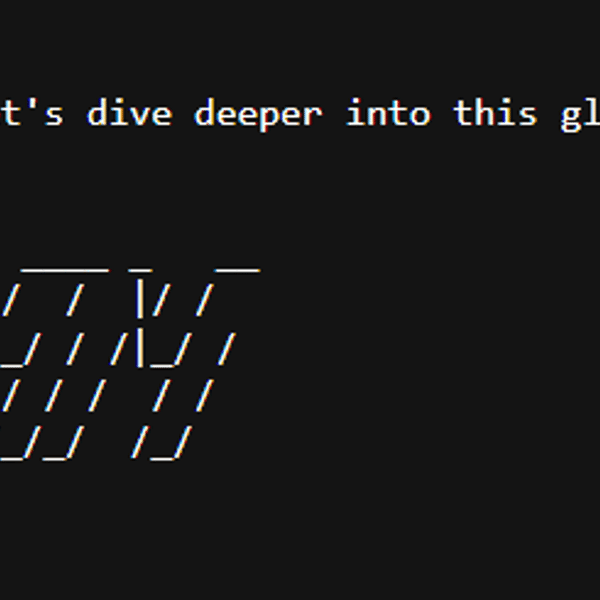 Prédiction de prix de Fartcoin
Prédiction de prix de Fartcoin Prédiction de prix de Bitcoin
Prédiction de prix de Bitcoin Prédiction de prix de Litecoin
Prédiction de prix de Litecoin Prédiction de prix de WINkLink
Prédiction de prix de WINkLink Prédiction de prix de Solana
Prédiction de prix de Solana Prédiction de prix de Stellar
Prédiction de prix de Stellar Prédiction de prix de XRP
Prédiction de prix de XRP Prédiction de prix de OFFICIAL TRUMP
Prédiction de prix de OFFICIAL TRUMP Prédiction de prix de Ethereum
Prédiction de prix de Ethereum Prédiction de prix de Worldcoin
Prédiction de prix de Worldcoin Prédiction de prix de dogwifhat
Prédiction de prix de dogwifhat Prédiction de prix de Kaspa
Prédiction de prix de Kaspa Prédiction de prix de Smooth Love Potion
Prédiction de prix de Smooth Love Potion Prédiction de prix de Terra
Prédiction de prix de TerraOù puis-je acheter impactMarket (old) (PACT) ?
Compte tenu de la volatilité et de la complexité inhérentes au marché crypto, il est pratiquement impossible de prédire avec précision le prix futur des cryptomonnaies. Toutefois, étant donné la nature cyclique du marché, les tendances historiques des prix, les perspectives de développement à long terme et le potentiel d'adoption plus large, nous pouvons tout de même faire quelques prédictions générales sur les mouvements de prix futurs potentiels. Il convient également de noter que même si ces prédictions peuvent donner un aperçu des fourchettes de prix et des scénarios possibles, elles doivent être considérées avec prudence et scepticisme. Il est peu probable que les mouvements de prix réels correspondent parfaitement à ces projections, et elles ne doivent être considérées que comme des estimations approximatives du potentiel d'investissement du marché.
Ce contenu vous est fourni à titre informatif seulement et ne constitue pas une offre, ni une sollicitation d'offre, ni une recommandation par Bitget d'acheter, de vendre ou de détenir tout titre, produit financier ou instrument mentionné dans le contenu, et ne constitue pas un conseil en investissement, un conseil financier, un conseil de trading, ou tout autre type de conseil. Les données présentées peuvent refléter les prix des actifs tradés sur la plateforme Bitget ainsi que sur d'autres plateformes d'échange de cryptomonnaies et de données de marché. Bitget peut facturer des frais pour le traitement des transactions en cryptomonnaie qui peuvent ne pas être reflétés dans les prix de conversion affichés. Bitget n'est pas responsable des erreurs ou des retards dans le contenu, ni des actions prises sur la base de ce contenu.
Ce contenu vous est fourni à titre informatif seulement et ne constitue pas une offre, ni une sollicitation d'offre, ni une recommandation par Bitget d'acheter, de vendre ou de détenir tout titre, produit financier ou instrument mentionné dans le contenu, et ne constitue pas un conseil en investissement, un conseil financier, un conseil de trading, ou tout autre type de conseil. Les données présentées peuvent refléter les prix des actifs tradés sur la plateforme Bitget ainsi que sur d'autres plateformes d'échange de cryptomonnaies et de données de marché. Bitget peut facturer des frais pour le traitement des transactions en cryptomonnaie qui peuvent ne pas être reflétés dans les prix de conversion affichés. Bitget n'est pas responsable des erreurs ou des retards dans le contenu, ni des actions prises sur la base de ce contenu.

